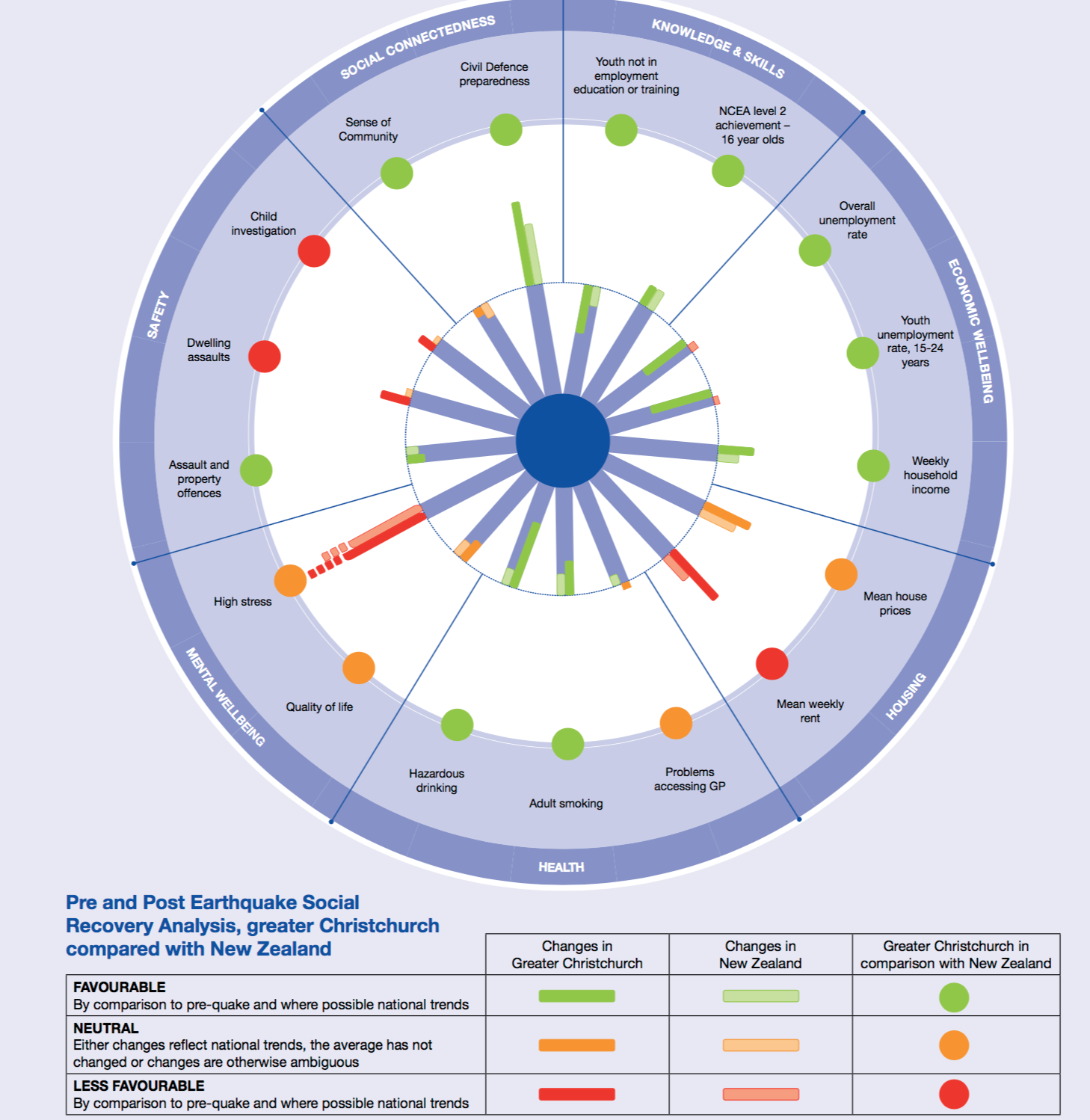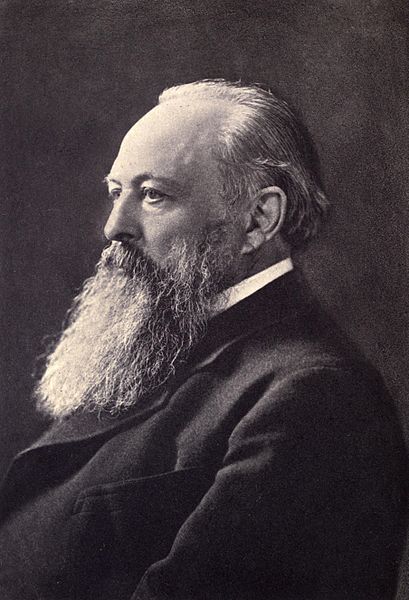[In Part I of this post I suggested that – even for the non-religious – there’s some interesting social, economic and political insights to be gained from considering the ubiquitousness of religion. More specifically, I claimed that the myth of the ’empty tomb’ in the Christian tradition provides particular insights. I argued that organised religion coordinates the activity of large groups of people and, perhaps as a side-effect, leads to the ‘symbolic self’ coming in to its own. Part II looks at the consequences of that enlarged role of the ‘self’, how modern societies further increase that role and what, therefore, the myth of the empty tomb might tell us about the way forward for a humane society.]
There’s a recurring ‘unintended consequence’ of giving the lead role in life to a ‘self’.
Mark Leary – one of the palaeoanthropologists I mentioned in Part I of this post – put it simplest in the title of his book on the subject of the ‘self’ – ‘The Curse of the Self: Self-Awareness, Egotism, and the Quality of Human Life‘.
As the blurb for the book says,
Although the capacity for self-awareness is an essential aspect of human nature, self-reflection comes at a high price. Self-awareness and its accompanying egoism profoundly affect people’s lives, interfering with their success, polluting their relationships with other people, and undermining their happiness.
It should be added, of course, that some societies – like hunter-gatherer societies – actively deflate the self. Others actively enhance it and, as they do so, enhance the problems it causes.
There’s little that is new in this observation. But what kinds of societies enhance the ‘self’?
Well, I’ll cut to the chase. Societies in which individual fortunes are made through trade and exchange rely, fundamentally, on people having an intense sense of self.
It’s telling that when the famous philosopher and social psychologist George Herbert Mead was developing his characterisation of the self in his book ‘Mind, Self, and Society‘ he drew inspiration from Adam Smith’s analysis of encounters between individuals in markets. What Mead realised is that markets are essentially games in which individuals adopt roles (‘seller’, ‘buyer’). For markets to work each ‘player’ must come to understand the view of their role from ‘outside’.
In short, when two people are engaged in trade or exchange a basic skill is to be able to see ourselves as others see us – to take, as Mead put it, the perspective of the ‘generalised other‘ upon ourselves through understanding the general nature of the ‘game’ we are playing:
For Mead, if we were simply to take the roles of others, we would never develop selves or self-consciousness. … A role-taking (self) consciousness of this sort makes possible what might be called a proto-self, but not a self, because it doesn’t have the complexity necessary to give rise to a self. How then does a self arise? Here Mead introduces his well-known neologism, the generalized other. When children or adults take roles, they can be said to be playing these roles in dyads. However, this sort of exchange is quite different from the more complex sets of behaviors that are required to participate in games. In the latter, we are required to learn not only the responses of specific others, but behaviors associated with every position on the field. These can be internalized, and when we succeed in doing so we come to “view” our own behaviors from the perspective of the game as a whole, which is a system of organized actions.
Mead’s analysis of the self – and how it arises both in individual development and over evolutionary time – is fascinating and subtle. But the important point here is that selves are essential for playing the ‘games’ each society produces. And the more vital those games are to our survival the more we have to fine-tune our skills at being reflexive, self-aware selves.
The ‘game’ of the market is perhaps one of the defining games of our particular society – and it wouldn’t work without heavy reliance on the self. And the more the game of the market penetrates the social world the more the self dominates and leads the actions of individuals (as Mead argues, and as should be obvious, the self is not the same as the individual).
Further, Mead’s analysis shows that fundamental to the self is awareness of the view that the generalised other adopts to us in our roles (as, for example, mother, brother, shop assistant, captain of industry or criminal). To put it starkly, the self only exists by virtue of the judgments made of it by others. It is inherent in the very notion of the self to be under the microscope of the other.
And that’s not always a comfortable place to be.
Adam Smith – the original analyst and advocate of the capitalist market – was also clear about the fact that the pursuit of status through the accumulation of ‘wealth and greatness’ was a fool’s errand; but one for which he thought the rest of us should be eternally grateful.
As I highlighted in a previous post on Smith’s ‘Theory of Moral Sentiments’, after a passage in which Smith details the delusional nature of the “pursuit of wealth and greatness” through the parable of a “poor man’s son“, he concludes that:
It’s just as well that nature deceives us in this way. This deception is what starts men working and keeps them at it. It is what first prompted men to cultivate the soil, to build houses, to found cities and commonwealths, and to invent and improve all the sciences and arts that make human life noble and glorious, having entirely changed the whole face of the globe, turning the nature’s primitive forests into agreeable and fertile plains, and making the trackless and barren ocean a new source of food and the great high road of communication to the different nations of the earth. These human labours have required the earth to redouble her natural fertility, and to maintain a greater number of inhabitants.
I quoted the tale of the poor man’s son in that previous post but it is worth repeating here, slightly abridged:
The poor man’s son, whom heaven in its anger has visited with ambition, when he begins to look around him, admires the condition of the rich. [What some call ‘benign envy‘] … He sees his superiors carried about in machines, and imagines that in one of these he could travel with less inconveniency. He feels himself naturally indolent, and willing to serve himself with his own hands as little as possible; and judges, that a numerous retinue of servants would save him from a great deal of trouble. He thinks if he had attained all these, he would sit still contentedly, and be quiet, enjoying himself in the thought of the happiness and tranquillity of his situation. He is enchanted with the distant idea of this felicity. It appears in his fancy like the life of some superior rank of beings, and, in order to arrive at it, he devotes himself for ever to the pursuit of wealth and greatness. To obtain the conveniencies which these afford, he submits in the first year, nay in the first month of his application, to more fatigue of body and more uneasiness of mind than he could have suffered through the whole of his life from the want of them. … With the most unrelenting industry he labours night and day to acquire talents superior to all his competitors. He endeavours next to bring those talents into public view, and with equal assiduity solicits every opportunity of employment. For this purpose he makes his court to all mankind; he serves those whom he hates, and is obsequious to those whom he despises. Through the whole of his life he pursues the idea of a certain artificial and elegant repose which he may never arrive at, for which he sacrifices a real tranquillity that is at all times in his power, and which, if in the extremity of old age he should at last attain to it, he will find to be in no respect preferable to that humble security and contentment which he had abandoned for it. It is then, in the last dregs of life, his body wasted with toil and diseases, his mind galled and ruffled by the memory of a thousand injuries and disappointments which he imagines he has met with from the injustice of his enemies, or from the perfidy and ingratitude of his friends, that he begins at last to find that wealth and greatness are mere trinkets of frivolous utility, no more adapted for procuring ease of body or tranquillity of mind than the tweezer-cases of the lover of toys; and like them too, more troublesome to the person who carries them about with him than all the advantages they can afford him are commodious.
A fairly damning portrayal of personal ambition.
Yet, social and economic inequalities and hierarchies encourage just these sorts of ‘self-ish’ cognitions, feelings and behaviours. They encourage, that is, ‘ambition’, ‘aspiration’ and – if Smith is correct – a life spent in an ill-fated pursuit of the “mere trinkets of frivolous utility” known as “wealth and greatness“.
Work on human wellbeing supports Smith’s analysis. Materialism (the pursuit of ‘fame and fortune’ aka Smith’s ‘wealth and greatness’) is routinely correlated with lower happiness. The self – ‘fit for purpose’ when it comes to enabling personal ambition – suffers as a direct consequence of its activity.
Yet, such pursuits are just what selves – in the context of large aggregations of people structured into highly explicit status hierarchies – feed upon. They – and the psychological capacities associated with them – enlarge to the point that they can crowd out other less self-focused capacities. Such societies are like agar plates for selves.
Consequently, they are also agar plates for human anxiety and misery.
Intriguingly, the opposite is also true. The much-valued experience of ‘flow’ involves, amongst other things,
- intense and focused concentration on the present moment
- merging of action and awareness
- a loss of reflective self-consciousness
- a sense of personal control or agency over the situation or activity
- a distortion of temporal experience, one’s subjective experience of time is altered
- experience of the activity as intrinsically rewarding, also referred to as autotelic experience
The “loss of reflective self-consciousness” pretty plainly is the loss of the ‘symbolic self’ itself. There is also little room for the symbolic self when concentration is on the present (rather than the future) and where action and awareness are one.
These experiences that involve the loss of self are not just valued but, for some people, become the focus of their lives. And not all of those avenues to the loss of self are the positive kinds of experiences described as ‘flow’. From ‘blobbing out’ in front of the TV, through the glass or three of wine, getting ‘blotto’ and stoned all the way through to attempts (successful or otherwise) at suicide the modern pantheon of means to the end of the “loss of reflective self-consciousness” is quite remarkable.
In the economic language of the market, there’s a lot of demand out there for means to escape the self.
But, as they say, you might be able to run but you can’t – ultimately – hide. At least, many of us can’t.
The debates over the increasing rates of depression and anxiety (and other mental disorders) – which are not disputed – today tend to revolve around whether or not there is current ‘over-diagnosis’ (rather than historic ‘under-diagnosis’) and the possible psychopathologisation of ‘normal’ human experience. (Here’s an interesting summary of those arguments.)
What is largely left unsaid, however, is that ‘normal’ human experience has recently got grimmer. Not in ‘traditional’ terms, of course (e.g., absolute material wellbeing) but in more personally important terms.
In 1998, Martin Seligman (now known as the Professor who established ‘positive psychology’ but was then President of the American Psychological Association) had this to say:
Starting about 20 years ago, we began to do surveys of how much depression there had been over the century. And we discovered two astonishing things about the rate of depression across the century. The first was, there is now between ten and 20 times as much of it as there was 50 years ago. And the second is that it has become a young person’s problem. When I first started working in depression 30 years ago — more than 30 years ago now — the average age of which the first onset of depression occurred was 29.5. Essentially middle-aged housewives disorder. Now the average age is between 14 and 15. It is green [sic]. It has become a teenage disorder. So the two facts about depression we need to keep in mind is that there is vastly more of it among Americans, particularly among American youth.
…
And the first thing I want to say is the existence of an epidemic of depression among young Americans is a serious paradox. The hands on the nuclear clock are farther away from midnight than at any time since Bikini. There are fewer soldiers dying on the battlefield today than at any time since the Boer War [This was pre-9/11].
There is a smaller percentage of children dying of starvation in the world. Every statistic we have on the, quote, objective, unquote, well-being of young Americans is going north. And every statistic we have on their demoralization, on depression, is going in the other direction. There is more purchasing power, more books, more records, more education, and so the question is: How do we explain the worst demoralization we’ve had since we’ve been able to measure it among youth against a background of strong objective statistics on well being?
It is something of a paradox (and results in very hot debates between those on the right and the left of the political spectrum). Is life getting better all the time (and any increase in our experienced misery is, therefore, perverse of us) or is it, in some deeper sense, getting worse?
Closer to home (with a focus on Australia), Richard Eckersley has highlighted the same paradox in his article “Separate selves, tribal ties and other stories: making sense of different accounts of youth“. He also mentions the extra paradox that, while young people have a generally negative view of the fate of the world as a whole, they have, on average, a positive view about their own prospects in life.
Interestingly, both Seligman and Eckersley point the finger – in different ways – at selves.
The title of Eckersley’s article speaks of ‘separate selves’ and – interestingly in the context of the Göbekli Tepe discussion above – ‘tribal ties’.
Briefly, he argues that young people respond to the increasingly complicated and threatening world they find themselves in by, simultaneously, asserting their separate selves (and life trajectory) and increasing their ‘tribal ties’ to their peer group (e.g., through social media and large face to face aggregations). As he says,
We have barely begun to grasp the extent to which the world has changed, and how much globalisation and the media have expanded our spheres of awareness and so the range of influences on our wellbeing. As Australian psychologist Amanda Allan says, our relationships with time and space have changed markedly (Bradley 2003). ‘People are referencing themselves more and more in relation to global events, and social cultures beyond their immediate context.’ In Western societies, she says, there has been ‘a disembodying of what we consider to be our intimate frame of reference’, resulting in a reorientation of who we are in relation to others.
He could have been writing – with slight modification – at the time of the construction of the first site at Göbekli Tepe which may have been the first time at which Homo sapiens experienced “a disembodying of what we consider to be our intimate frame of reference“.
And these changes lead to complex outcomes:
For example, the Life Patterns study, which has followed a large group of young people since they left school in 1991, has found that as they approach thirty many still lead unsettled lives: changing jobs, renting, unmarried, childless (Dwyer et al 2003). The traditional pattern of a linear transition from education to work to marriage and children no longer applies. The break with the past is not sharp; rather the group is attempting to blend or balance traditional expectations with new life circumstances.
According to study director, sociologist Johanna Wyn, the post-1970s generation has made a realistic adjustment to an unstable world (Horin and Moses 2003). They value a multidimensional life based on self-discovery, personal autonomy, fitness and continuous learning; they are self-reliant and self-focused. ‘This is the new way of being an adult,’ Wyn says. ‘This generation is showing the rest of us how adult lives will be lived in the future.’
The positive aspects of this more prolonged journey include more time to explore and assess the demands of adult life, to sort out and balance for themselves their priorities for the future. Most – about 90 percent – express ‘real satisfaction’ with their personal development, believing they have made appropriate choices. But, as I’ve already argued, such findings can’t be taken at face value. Whatever the pluses of the ‘new adulthood’, the study also shows it comes at cost to many young people.
The young men and women in the Life Patterns study are a ‘success cohort’ (with most undertaking further education), but by 2002 they themselves had concerns about their health; less than 60 per cent regarded themselves as physically healthy, and a similar proportion as mentally healthy. They admitted the need for constant reflection, reinvention and flexibility required a lot of effort, toughness and self-confidence. There is sense of constant movement, ‘almost like treading water’. Maintaining the right balance in life remains a real challenge; life is still a struggle with uncertainty. And one of the consequences is a weakening of links with collective causes and identities.
Seligman delivers a different but related message when he considers the first of three proposed ’causes’ for the ‘depression epidemic’:
So first, the “I-we” balance. America has always been an individualistic country. But by the measures of individualism we have today, the “I” is maximal. All our measures of individualism are sky high among kids today. Now, there is nothing wrong with individualism. And it brings delicious freedoms in its wake. But depression is, by all of our lights, a disorder of individual failure. It is what commonly happens when you’re thwarted. And the individual fails at the goals that are most dear to the individual. Now, if you’ve got a big “I,” if you believe that “I’m the only important thing in the world,” “my successes and failures are monumental,” it sets you up for depression. At the same time, if you have a small “we”, — and that is what I believe has happened in the last 50 years — then you don’t have good buffers against depression. Our parents, our grandparents had relationships, had comfortable spiritual furniture to sit in when they failed. They had their relationship to God, their patriotism relationship to a nation, relationship to a large community, and probably best of all,a large and stable extended family. All of these larger factors, all of the spiritual furniture, has in the last 50 years become threadbare. So I believe that the combination of a huge “I” and a small “we” is the first factor in making our young people such a set up for depression.
If you’re wondering, the second factor is the direct – and, for Seligman, misguided – ‘injection’ of ‘self-esteem’ into young people. The phrase says it all – increasing the ‘esteem’ with which one regards one’s ‘self’. Perhaps necessary in a world with so little ‘spiritual furniture’ as he calls it (’embeddedness in life’ might be another way of saying the same thing).
The third factor he calls ‘victimology’ – and guess who the victim is? (hint: the usual suspect). [I’m aware of the danger in the rhetoric of ‘victimology’ – that it legitimates structural victimisation of groups of people. For now I’ll let it go.]
As a psychologist, Seligman inevitably individualises the causes but a more direct way of characterising the process is through emphasising the social changes that lead both to the elevation of the self and to its immiseration. The ‘self-esteem movement’, as he calls it, did not arise from nowhere. It was part and parcel of the same social changes that have, generally, elevated and then psychologically crushed the self.
Through myriad means our world increasingly demands the pumping up of the self – and hence each person’s need to focus on their own self.
(Some of those means are quite deliberate. If you haven’t seen it yet, then the BBC series ‘The Century of the Self‘ is a must-watch analysis of the rise of PR and the engineering of the focus on the self, particularly the self as consumer – an especially modern variant of the symbolic self.)
As every bookstore testifies, we increasingly seek out help to ‘achieve our potential’, to become ‘highly successful people’, to ‘motivate’ ourselves, to gain ‘wealth and greatness’, to ‘set goals’, to ‘accomplish dreams’. Who we are and what we have is never enough.
We seek inspiration from business leaders and ‘motivational speakers’; we seek enlightenment and peace from spiritual masters in eastern traditions; we seek health and fitness tips from athletes and celebrities.
We want to know how to ‘live life to the full’ how to be ‘vital’, ‘energised’ and ‘productive’. Our lives, we believe, should be full of challenges, experiences, projects and passions so we set about creating and collecting them. Without them would ‘we’ even be alive?
In short, we live as if life were little more than being a self.
Yet, at the same time such a focus on the self and its interests can be life-destroying; especially in a world riven with inequality and social hierarchies.
The last forty years of global economic ‘reforms’ – including, notably, in New Zealand – have seen the latest ratcheting of our human world towards one that squeezes people further into psychological reliance on an independent – rather than interdependent – ‘symbolic self’.
As a result, we spend half our time trying to forge our way ahead, to fight – through considerable effort – to succeed, to ‘win’. We spend the other half recovering from the effort, immersing ourselves in consumerist consolations then trying to find new ways to motivate ourselves to climb back into the ring.
During those last four decades the rhetoric of the self has grown and we’ve been encouraged to see pursuit of its interests as the best guide to living life – think ‘aspiration’, ‘ambition’, ‘self-reliance’, ‘celebrating success’, etc.
A clear aim of the economic restructuring has been to reduce the opportunity for collective responses (political and otherwise) to our social and economic ills; there’s been the undeniable production of a more unequal world and the consequent turbo-boosting of the individual’s struggle to find themselves on the right side of that inequality equation.
All of these developments make life hard for the very selves we conjur up in order to survive in this world. The kind of self that our society creates in us (for its own purposes) is also the self that is most acutely aware of its social standing, of the effort to advance itself and of every failure to achieve in the eyes of the world and, therefore, in its own eyes.
It’s clear from mental health statistics and reports that for some selves – for some of us – life is not so much ‘hard’ as it is ‘tortured’.
Throughout history but especially now, we have, it seems, called forth ‘selves’ through our social and economic arrangements only to crucify them.
But it is not how it has to be.
And this I think is partly what explains the appeal of the ’empty tomb’. Our ‘symbolic selves’ understand the symbolism in the resurrection myth all too well – they are watching their ritual deaths.
What, metaphorically, dies on the cross is the all-suffering self. The resurrection myth is simply the promise that the death of self is not the end, that the self is not all there is in us.
All, in fact, very buddhist – all life is pain and the only release is to see through the illusion of the self.
[Strangely enough, as this BBC documentary presents, there’s apparently even a tradition in Kashmir that Jesus, between the ages of 14 and 29, was brought to ‘the east’ to be trained as a buddhist monk. He then returned to Palestine to preach, was crucified but survived. He travelled back to Kashmir and lived out his days until he died at around 80 years. His grave is supposedly in a village there. Fortunately, the doco dispenses with the rival ‘theory’ about the possible survival of Jesus – for that now debunked account just read Dan Brown’s ‘The Da Vinci Code‘ or its slightly less fictional predecessor ‘The Holy Blood and the Holy Grail‘.]
While many people interpret such religious myths in terms of personal salvation that’s not my interest here. In fact, if the notion of resurrection became purely seen (by each of our ‘selves’) as a get out of jail free card – i.e., the ability to keep being the all-consuming ‘self’ our society tempts and coerces us to be not only while alive but for eternity – then the myth will have failed in its principal task, to show us life beyond the self.
My interest in the ’empty tomb’ is in its clear political message whose origin goes right back to Göbekli Tepe when humans first started to organise themselves in these over-sized aggregations that now almost all of us live in.
The capacity to be a self is part of being human, of being a member of Homo sapiens. But like all evolved systems, those capacities don’t behave the same in every environment.
The political project, amongst other things, is to allow individuals to make use of those capacities in ways that produce a sustainable and humane human society. The ability to reflect on our thoughts and feelings makes us the exquisitely unusual social beings that we are but, in the wrong conditions that same ability can turn against us.
Being a self should, at most, be a part-time job not a full-time one.
And, politically, there’s only one way to ensure that – create economic and social arrangements that have little need for selves as we’ve come to know them.
Who knows, the myth might even be true – when we collectively kill our ‘selves’ we may just be able to get up and walk out, together.
And leave our current society behind – as an empty tomb.





